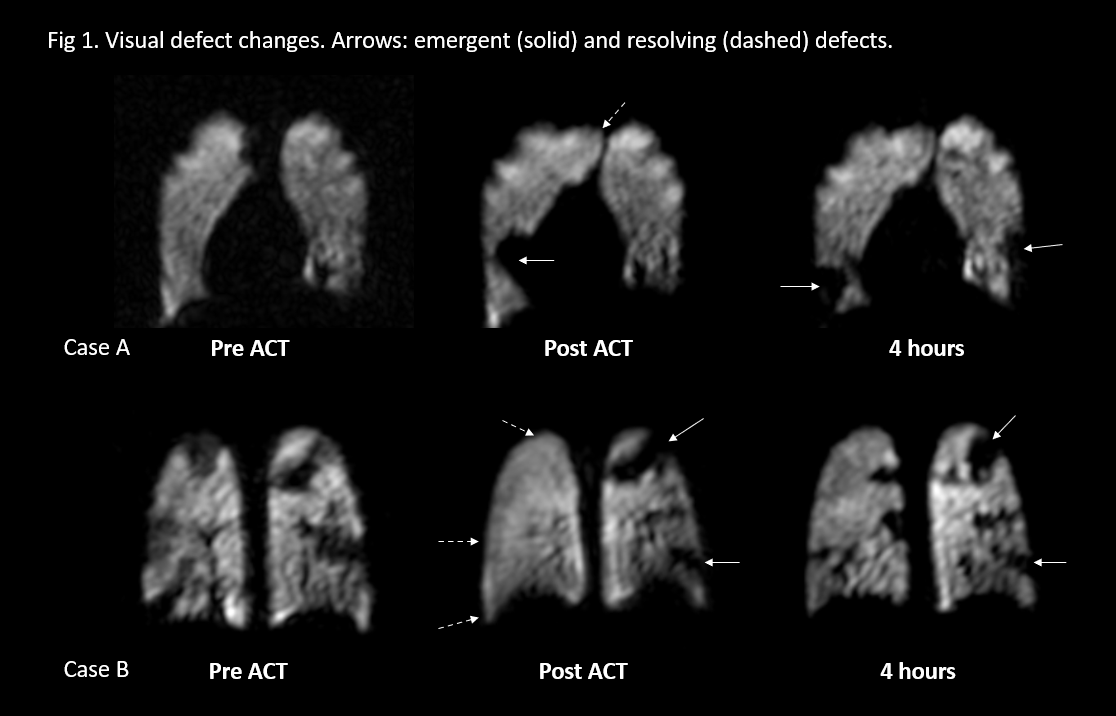Abstract
Airway clearance techniques (ACTs) are key in managing Primary Ciliary Dyskinesia (PCD) yet their effects are unknown.
Clinically stable individuals with PCD were imaged with 129Xe-MRI immediately pre, post and 4-hours post ACT (or no-ACT). ACTs were based on the individual?s usual regimen. Ventilation defect percent (VDP) and heterogeneity index (VHI) were calculated from 129Xe-MRI.
18 children with PCD (12 male, age 7-17 years, FEV1 -1.0±1.4) were assessed. ACT (n=15) and no-ACT (n=3) groups were similar at baseline (age, sex, FEV1, VDP, VHI). Heterogeneous ventilation distribution changes were visualised post-ACT and 4-hours including defect resolution, improvement, persistence and new defects (Fig 1). In the ACT group, no significant change in VDP from pre-ACT was seen immediately post or 4-hours post-ACT (Mean±SD VDP 7.4±6.5%, 9.3±9.2% and 7.4±6.7% respectively); VHI improved significantly at 4-hours (VHI 10.7±3.3%) when compared to pre-ACT (VHI 11.8±4.1 p<0.05) and immediately post-ACT (VHI 12.4±4.6% p=0.0005).

Improved ventilation homogeneity is seen following a personalised ACT in children with PCD. Although lung ventilation percent is unchanged, the heterogeneous impact on ventilation abnormalities may be clinically informative.